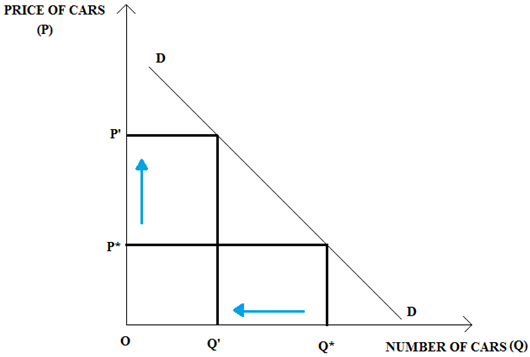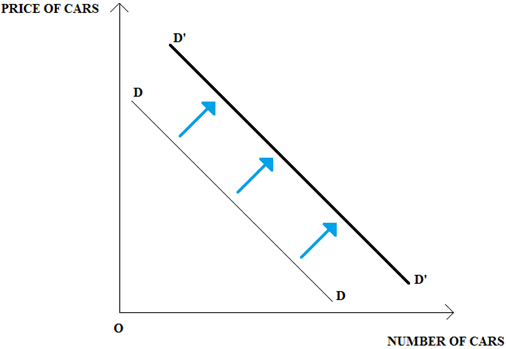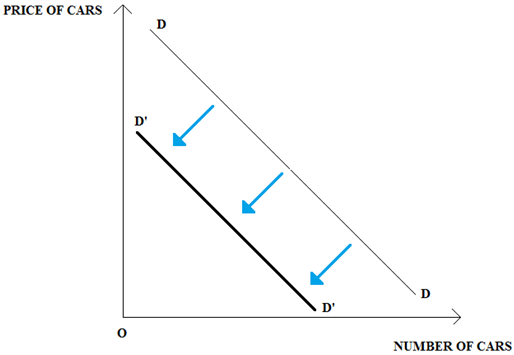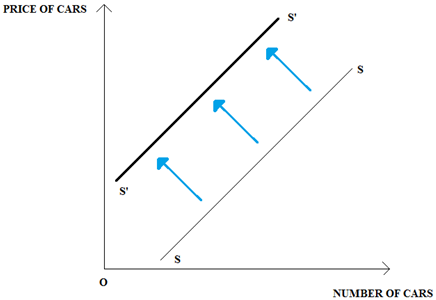Bonanza Offer FLAT 20% off & $20 sign up bonus Order Now
Describe the Demand and supply of a product of your choice and factors that affect the demand and supply side of the market.
The demand for a particular product depends on a lot of factors. The main determinant of demand for a product is its price. Demand is generally inversely related to price, that is, as the price of a product increases, the demand for it decreases and vice-versa. However, there are exceptions to this relationship like Giffen commodities the demand for which is directly related to the price, that is, the demand increases with increase in price and vice-versa. Prices of other related goods like substitute goods and complementary goods also affect the demand for a commodity. When the price of a substitute good of a certain commodity falls, ceteris paribus, the demand for that commodity falls because people start substituting this commodity for the cheaper alternative. Similarly, when the price of a complementary good falls, the demand for the commodity increases since complementary goods are consumed together and if the price of one falls the demand for both the goods will increase. Income of the individual is another major determinant of the demand for a product. The demand for a normal commodity increases with increase in the income of the individual. But for an inferior commodity, the demand falls with increases in income. Other determinants of demand are tastes and preferences of consumers and expectations about the future. The downward-sloping market demand curve is a graphical representation of the inverse relationship between the demand for a commodity and its price. Changes in demand due to price changes are represented by shifts along the demand curve whereas changes in demand due to changes in any other factor are shown by shifts of the demand curve.
The supply of a product primarily depends on the price of the product and the supply generally increases with increase in price, ceteris paribus. Besides that, the prices of inputs that determine the cost of production also affect the supply; as the price of inputs rises pushing up the costs of production, the supply of the product is supposed to fall. Other factors are technology, prices of other goods, price expectations and the number of producers in the market. In a demand-determined market structure, demand for a particular product determines the supply. The market supply curve is a graphical representation of the relationship between price and quantity supplied and since these are directly related, the curve is upward-rising.
The market equilibrium is established when the demand for a particular commodity is exactly equal to the supply of the same and the corresponding price is called the equilibrium price.
Considering the market for cars, we analyse the market demand and supply for cars under different conditions.
The demand for cars depends on a lot of factors. The primary determinant of the demand is the price. When the price of cars falls, the demand for cars will go up. Similarly, when the price of cars rises, the demand will fall. The relative rise and fall in the demand depends on the price elasticity of demand for cars which is generally high given that car is a luxury commodity. This implies that when the price of cars reduces by a small amount, the demand will go up considerably. The relationship is illustrated in the following diagram:

FIGURE 1
In Figure 1, the DD curve represents the market demand curve for cars. As the price of cars increases from P* to P’, the number of cars demanded in the market falls from Q* to Q’ along the demand curve.
The demand for cars is dependent on the availability of substitutes.
When the fares of public transports such as cabs increase it pushes up the demand for cars. This is however realized only in the long run. The demand for cars does not increase immediately. It takes some time for the adjustment and hence is reflected in the long run demand for cars. If the car of a particular brand is considered, the demand is affected by the prices of the cars of the other brands in the market. In any case, as the price of substitute good increases, the demand for cars will also increase as shown in the following diagram:

FIGURE 2
In Figure 2, when the price of substitutes increases, the demand for cars increases and this is represented by an outward shift of the demand curve from DD to D’D’.
Again, the demand for cars also depends on the price of complementary goods like petrol or diesel. If the price of petrol or diesel increases, the demand for cars will reduce. If however, the price of petrol increases, the demand for diesel cars may increase and vice versa. Thus, the demand for cars inversely depends on the price of fuel. This is illustrated in the following diagram:

FIGURE 3
Figure 3 illustrates the effect on demand for cars as the price of fuel increases. The demand for cars falls and this is represented by a shift of the demand curve from DD to D’D’. This implies that the price of cars and other factors remaining the same, when the price of fuel increases, the demand for cars will fall.
The demand for cars again depends on the income of an individual. As income increases, individuals will purchase cars and hence the market demand for cars will increase. This is represented by an outward shift of the market demand curve for cars. Again, as income falls the market demand for cars will also fall and the market demand curve will shift inward.
Again, the demand for cars also depends on the tastes and preferences of individual consumers. Some consumers may want to purchase cars of a particular brand with certain specifications while others may prefer different kinds. Accordingly, the market demand for cars will vary.
Expectations about the future also affect the demand for cars. If consumers expect prices to go up in the future, they will purchase cars in the present period. This will increase the demand for cars.
The supply of cars depends primarily on the availability and the costs of the factors of production and inputs. If the costs of inputs go up, the costs of production would rise. If the prices remain fixed, the supply will reduce. Technological progress increases the market supply of cars. All these factors shift the supply curve upwards as shown in the following diagram:

FIGURE 4
The supply curve shifts upward from SS to S’S’ representing an increase in the supply of cars.
Thus the demand and supply of cars in the market are determined by a number of factors and the individual effect of each of these factors is reflected when the other factors are held constant.
Varian, R 2005, Intermediate Microeconomics: A Modern Approach, W.W. Norton & Company, USA.
Pindyck, R & Rubinfeld, D 2005, Microeconomics, Pearson Education, USA.
Upload your Assignment and improve Your Grade
Boost Grades